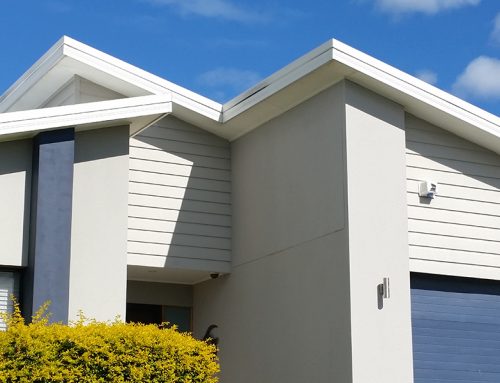Okay, let’s be honest — telling your friends that you’ve just updated your guttering and spouting systems isn’t as glamorous as say, a kitchen or bathroom reno.
But guttering and spouting systems go right to the heart of a home’s health and they play an integral part of a building’s waterproofing; together, they catch and channel water away from your home.
The thing is, when that system no longer functions properly, you’re likely to encounter issues ranging from overflows, leaks and water ingress through to serious structural damage.
So, how can you prevent that from happening?
We’ve provided some common warning signs to help you spot and prevent damage to your home. After this, you’ll know what to look for when doing inspections and maintenance for your guttering and spouting.
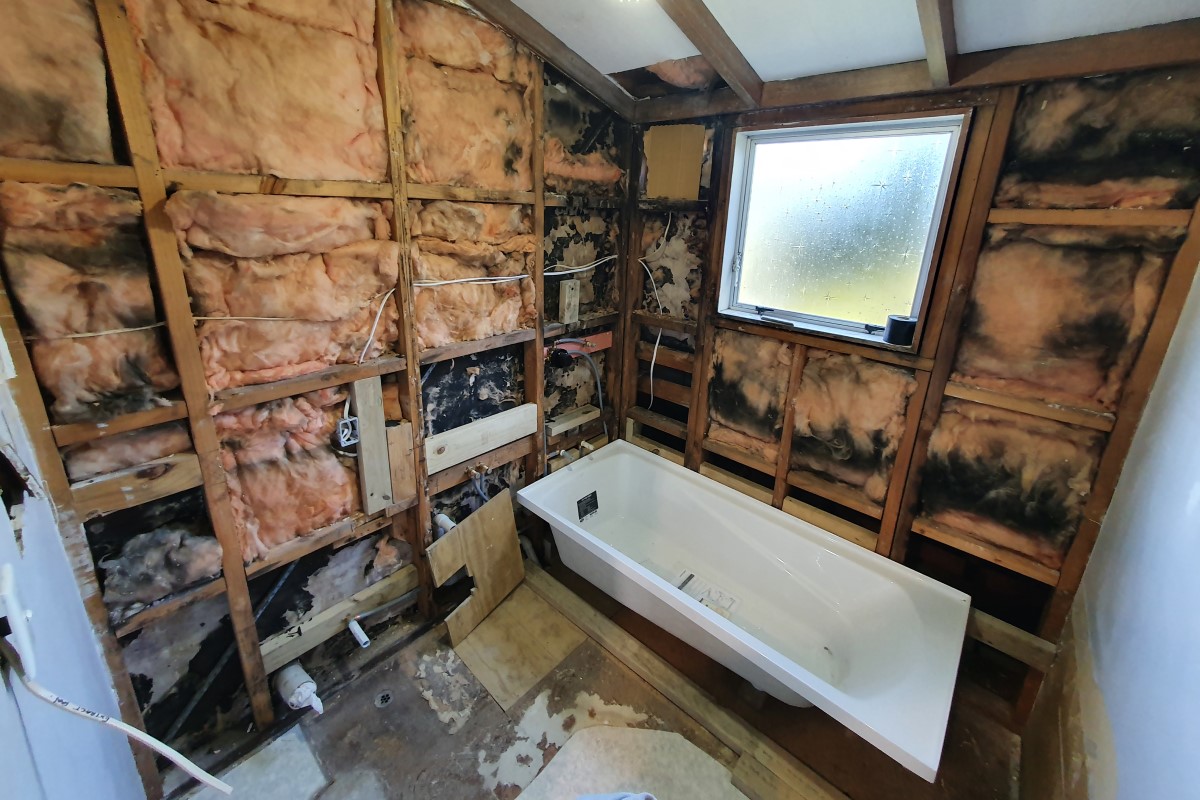
Related: Julian and Lexie uncovered damage from water ingress during their bathroom reno.
How bad could it get?
Gareth Samuel from Makara Valley Roofing in Wellington has seen perished gutters create catastrophic trouble.
“The worst example was guttering that had rusted so badly it broke off into power lines, causing massive headaches for the owner and power companies, not to mention the neighbourhood without power!” Gareth says.
But most guttering issues aren’t quite so spectacular.
The biggest risk is water ingress into your home:
- If caught quickly this may only result in superficial damage
- However, long term water ingress causes major structural damage along with dampness and essentially an unhealthy home.
- In worst-case scenarios, large sections of a home can be completely destroyed, as we’ve seen with the widespread issue of leaky homes in NZ.
Inspections you can do anytime
A simple inspection can be undertaken at any time for homes with common external guttering. The warning signs that indicate your guttering needs attention include:
- A buildup of debris: In gutters or in the drains that your spouting flows into
- Sagging or uneven guttering: Guttering should be straight, or have a slight angle towards downpipes. Look for bulges, sagging areas or dips
- Gaps in any guttering joins: Most guttering systems are assembled with expansion joints and over time these can work themselves loose
- Damaged or misaligned spouting: This is typically an issue that arises at the top or bottom of the spouting pipes, however spouting can also be damaged if struck
- Detached clips or other guttering fixings: This is usually coupled with guttering that sags near where the clips are detached
- Any deterioration of guttering or spouting materials: Typically only applicable for steel guttering systems
- Overhanging trees: Generally speaking, having trees overhanging your home will result in a faster rate of debris buildup and should be avoided.
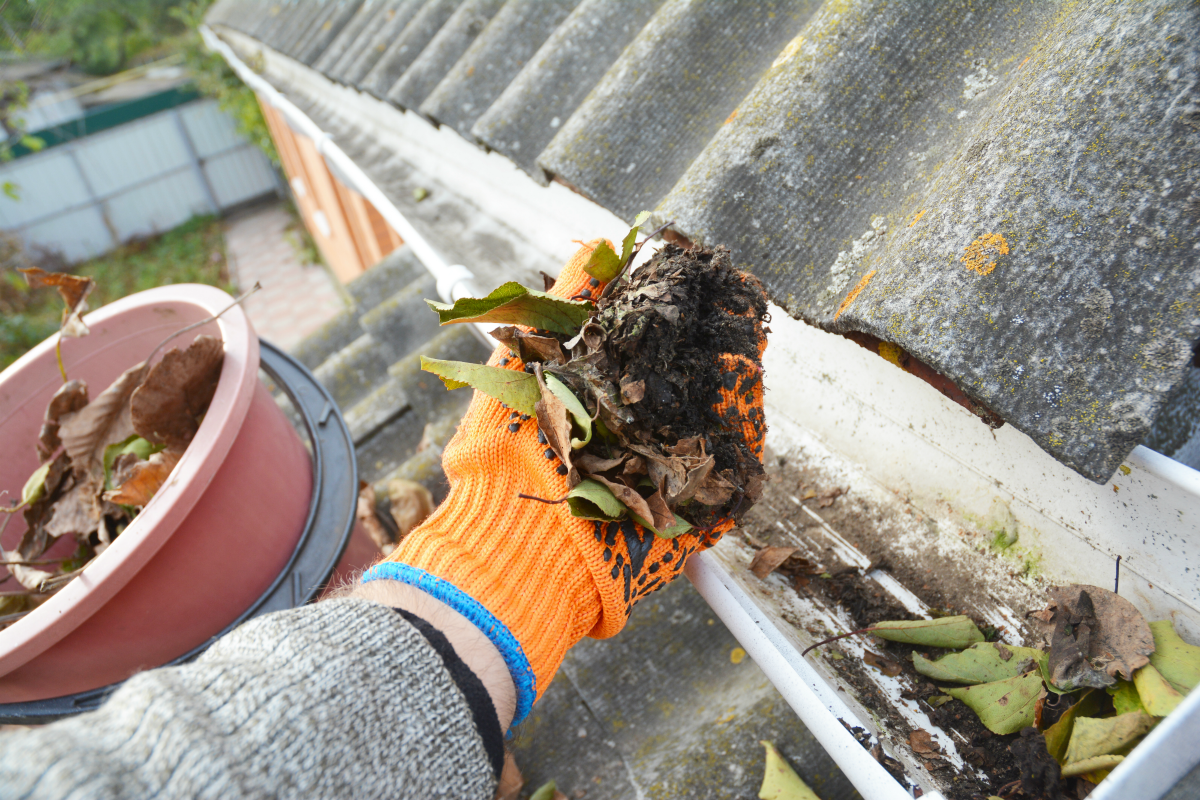
Overhanging trees should be avoided as they cause a faster rate of debris buildup.
Inspections you can do when it’s raining
Even if your guttering and spouting looks fine in the dry, a further inspection during rain can give more certainty that everything is working as expected.
Key indicators to look out for include:
- Overflowing from your guttering
- Streaming from any point under your guttering
- Streaming down the side of any part of your home
- Overflowing from any drains around your home
- Large puddles around your home which may be an indication there is running water feeding them.
Warning signs of water ingress
Water ingress is when water from outside makes its way into a building. Aside from regular inspections, if your roof profile is complex, or, you’ve recently had major weather events like heavy rain, it’s a good idea to keep a close eye for signs of water ingress like:
- Sagging of ceiling linings
- Corrosion of fixings such as screws and nails
- Uneven floor surfaces, like the lifting of vinyl
- Mould or fungi formation on surfaces (although this is often due to poor ventilation)
- Musty smells
- Swollen materials such as skirtings and architraves
- Staining or discolouration of materials or surfaces
- Stained or rotting carpet, or rusting of carpet fixings.
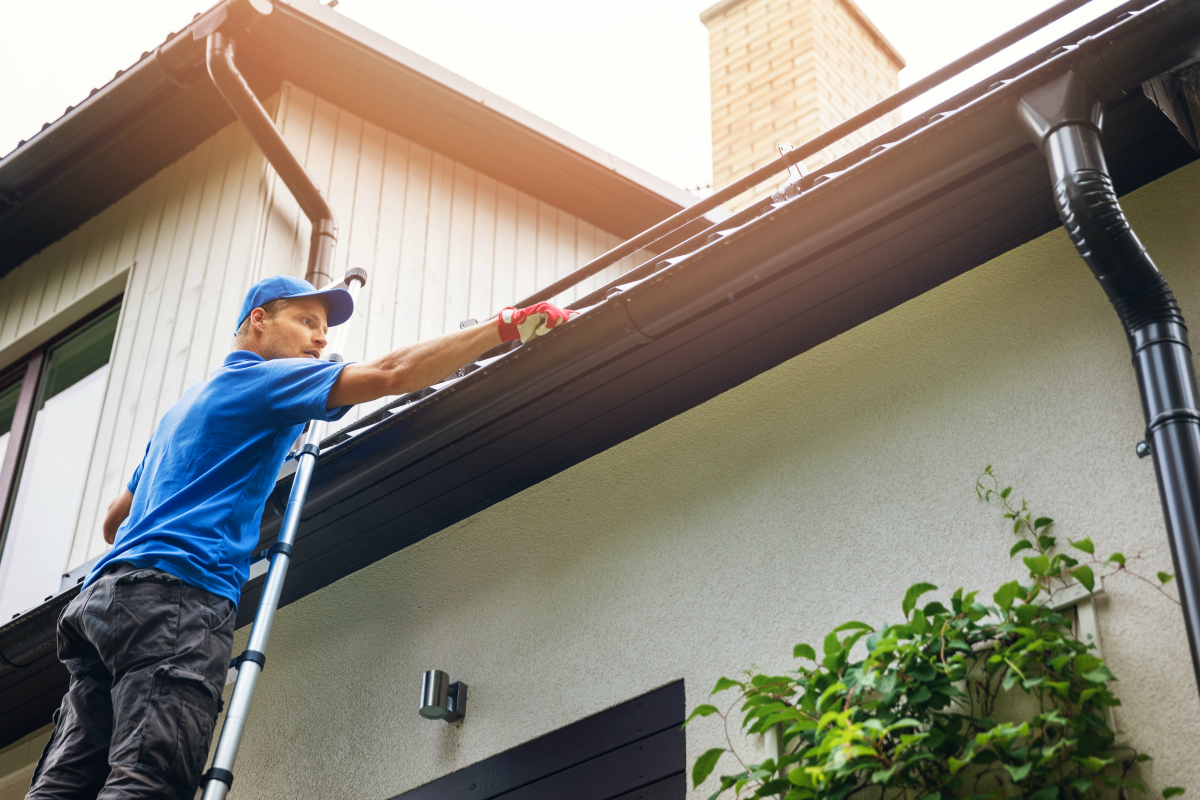
Roof-level inspections are particularly important for complex roof profiles.
Getting a tradie to do an inspection from roof-level
A number of guttering applications and systems require a yearly, roof-level, visual inspection, as a ground-level inspection is not sufficient to spot issues. Roof-level inspections are most commonly needed for:
- Concealed guttering systems (you can’t see the gutter around the perimeter of your roof)
- Roofs with valley guttering (the roof profile meets in a V shape)
- Complex roof profiles (multiple angles in your roof)
- Butynol roofs with built in guttering systems
- Flat roofs, or roofs with parapets
- Roof to wall junctions
- Decks over living areas.
These more complex guttering systems are particularly problematic when they fail. Unlike external guttering, failure more often leads to water ingress and damage to your home. Something as simple as a blocked drainage point in a complex roof profile can result in significant damage.
DIY vs Professional maintenance
Aside from low-risk maintenance, Phil Hunter from Rimu Roofing in Auckland emphasises the importance of calling in a professional for the major fixes.
“Gutter maintenance is essential if you want to avoid damage and build ups. However, accessing your gutters can be dangerous. Cleaning your gutters from the roof should be avoided at all costs, as standing in the wrong place can damage your roofing materials,” Phil says.
“New technologies mean that gutter cleaning is now easier and safer than before for the professionals. Many have tools that can even clean three storey gutters from the ground.”
If there is an indication you have a problem, here some guidance on hiring the right person to help solve it.
Tradies who can fix the damage from guttering and spouting failures
- Roofers and guttering specialists: are able to clean and replace your guttering and downpipes, and install gutter guards. They will also be able to replace any parts of your roof and guttering system that have failed
- Drain layers: will unblock your home’s underground drainage and assess the current condition
- Builders: will be able to inspect and assess the severity of any water damage. Typically this will involve replacing damaged timber, gib, flooring and joinery
- Arborists: can trim overhanging trees. It’s a job that only takes a few hours, and they take away all the trimmings
- A handyperson: will tackle your clogged gutters for you.
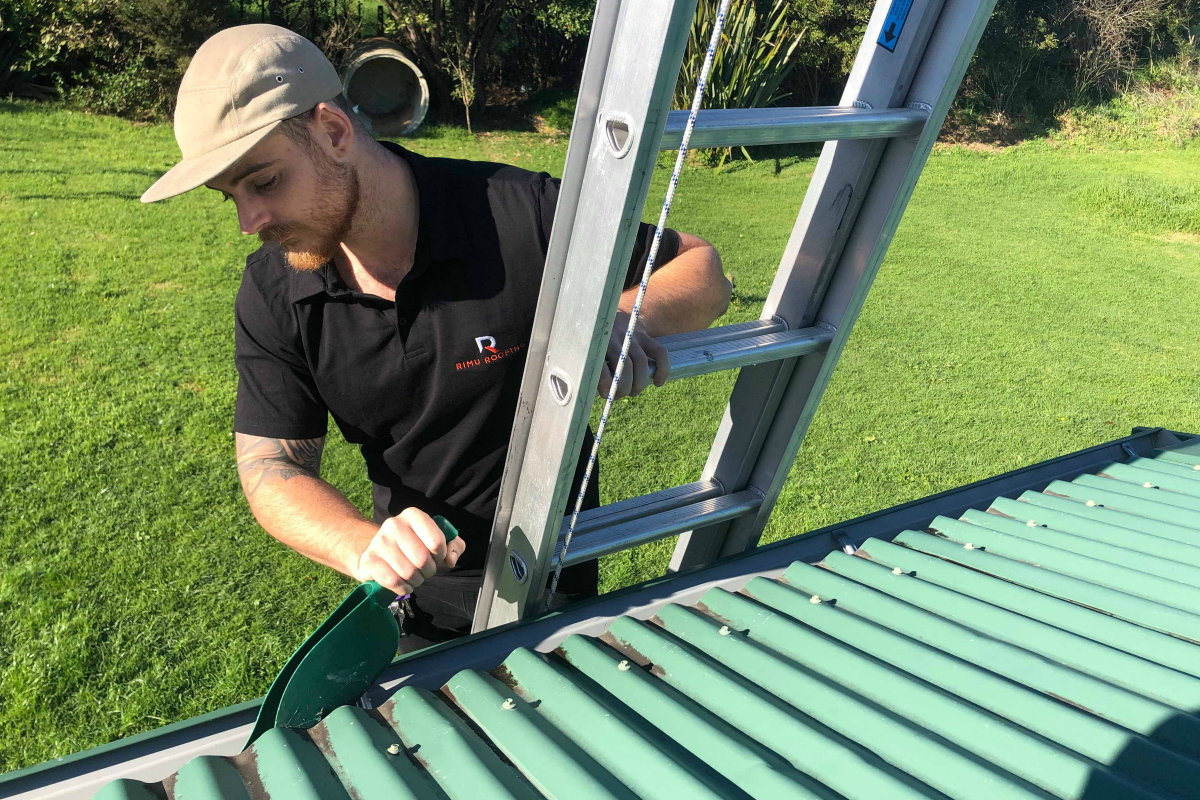
Phil from Rimu Roofing says the cause of the damage should be investigated as the same issue could be developing elsewhere.
What to expect with repairs to guttering and spouting
Phil from Rimu Roofing shares a couple of solutions that are used to repair or replace damaged guttering and spouting.
“There are membrane products which will repair cracked spouting even when wet. However, replacing damaged spouting is the long term solution,” Phil says.
“If access is not an issue, sections of PVC spouting can easily be replaced by a professional.
“The cause of the damage should be investigated as the same issue could be developing elsewhere.”
Key takeaways
Here’s how you can spot the warning signs and prolong the life of your guttering and spouting:
So, even though it’s not a glamorous home improvement, regular guttering and spouting inspections and maintenance will pay off long term. Spotting the warning signs early on will save you money, make your home last longer, and ensure your home stays dry and healthy.
Thanks to our two expert tradies for sharing with us their guttering and spouting tips. You can find these and many more expert tradespeople on Builderscrack.co.nz.




